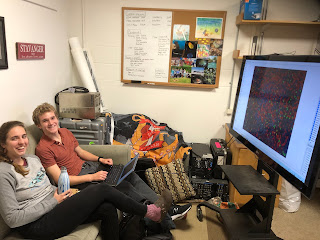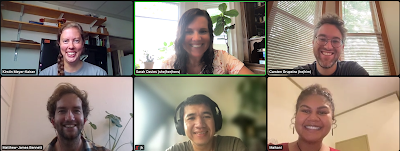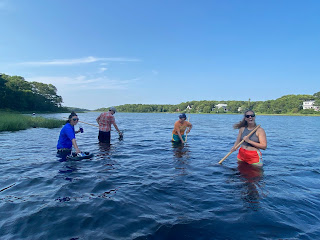Textile art

Johanna's photo: high-tech crafting When I arrived at work this morning, my postdoc, Johanna, pulled up a photo on her phone to show me. Proudly, she held the screen up to my face and then started giggling. The photo was taken in WHOI's AVAST facility - a high-tech work space on WHOI's campus. AVAST stands for Autonomous Vehicles And Sensor Technologies, but the facility is meant to be a collaboration hub for all kinds of research and technology development. It's a very 21st-century, open-concept, community-use work space outfitted with 3D printers and test tanks. The high ceiling and garage-style doors let robotic undersea vehicles come in and out. There are several vehicles being worked on at AVAST right now - a mid-water vehicle that follows fishes and collects their DNA, a full-ocean-depth vehicle with sensors that can handle the pressure at 11,000 m deep, even a titanium sphere that I think belongs to the submersible Alvin . AVAST is by every measure a technologica



.jpg)















